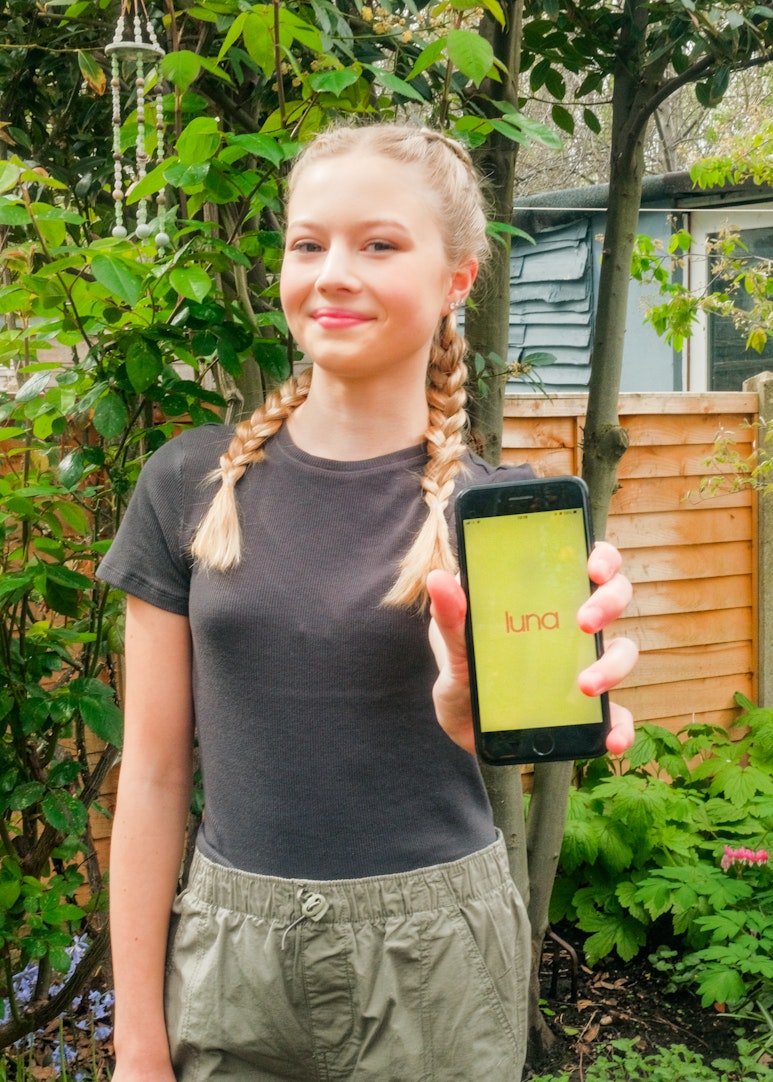
Parenting styles for teen girls
Explaining the different approaches

At luna, we hear from thousands of teenage girls every single day – through mood logs, anonymous questions and polls inside the app.
We see, in real time, how different parenting approaches shape a teen’s confidence, independence, communication and emotional wellbeing.
Some teens feel overwhelmed by strictness.
Others feel lost without boundaries.
Many simply wish their parents understood how their brain, hormones and emotions work.
Because of this, parents often ask us: “what parenting style should I be using with my teen?”
The truth? There isn’t one “perfect” approach.
But understanding the most common parenting styles – and how they affect teens specifically – can help you find a balanced way forward that works for your family.
This guide breaks down the key parenting styles you’ll hear being thrown about today, explains how they show up in real life, and links to deeper luna resources if you want to explore further.

What are parenting styles?
Parenting styles are patterns in how you guide, communicate with and set boundaries for your child.
Some are based on decades of research (like authoritative or permissive parenting).
Others are modern, social-media-driven descriptions (like gentle parenting or FAFO parenting).
Most parents don’t fit perfectly into one category, and that’s completely normal.
What matters is creating a home where teens feel safe, supported and guided, with space to grow into independence.
Below is an overview of the most relevant parenting styles for teens today.
Overview of common parenting styles
Gentle parenting
Core idea: respond with empathy, validate feelings, and collaborate with your child
Gentle parenting focuses on connection over control.
It encourages parents to understand the feelings beneath a teen’s behaviour and to model calm communication.
It can be hugely helpful for emotional regulation, though it can become draining without clear boundaries.
Read more: Gentle parenting your teen
Permissive parenting
Core idea: high warmth, low boundaries
Permissive parents are caring and supportive, but often avoid enforcing rules or following through with consequences.
This can create a relaxed home, but teens may struggle with responsibility, limits and self-regulation when boundaries are inconsistent.
Read more: Permissive parenting
Helicopter parenting
Core idea: protecting teens from discomfort or mistakes
Helicopter parents hover closely, stepping in quickly to fix problems or prevent struggle.
It comes from care, but can unintentionally limit resilience, independence and problem-solving.
Read more: Helicopter parenting
Therapeutic parenting
Core idea: a trauma-informed approach using PACE (Playfulness, Acceptance, Curiosity, Empathy)
Often used with children who’ve experienced adversity or emotional overwhelm, therapeutic parenting blends warmth with structure to help them feel safe and understood.
It supports emotional regulation, attachment and trust.
Read more: What is therapeutic parenting?
Co-parenting
Core idea: working together as separated or divorced parents
Co-parenting focuses on consistency, communication and stability, even when the relationship between adults is difficult.
It’s one of the biggest protective factors for teen wellbeing after separation.
Read more: What is co-parenting?
FAFO parenting
Core idea: teens learn through natural consequences
FAFO (“F*** Around and Find Out”) parenting steps back so teens experience the real-world impact of their decisions.
It teaches accountability, as long as warmth and guidance are still present.
Read more: FAFO parenting
Which parenting style is “best”?
There’s no single correct approach. However, research consistently shows teens thrive when parents combine:
- Warmth and emotional connection
- Clear expectations and boundaries
- Predictability and follow-through
- Age-appropriate independence
- Empathy and communication
This balanced approach is often referred to as authoritative parenting (not authoritarian - big difference!), and many modern styles overlap with it in different ways.
Remember: most parents blend several styles depending on the situation, the child and the day. That flexibility is a strength, not a flaw.
How to choose or adapt a parenting style
Here are a few questions to reflect on:
Does my teen feel emotionally safe with me?
Connection is the foundation of every effective parenting style.
Are my boundaries clear and consistent?
Teens feel more secure when they know where the limits are, and that you’ll follow through.
Am I preparing them for independence?
Your end goal is a confident young adult, not a perfectly compliant teen.
Am I modelling the behaviour I hope to see?
Whether it’s communication, self-calming or respect, teens learn far more from what they witness than what they’re told.
How luna can support your parenting style
Whatever parenting approach you lean toward, luna gives teens a safe, age-appropriate space to:
- track moods and understand emotional patterns
- learn about hormones, stress, sleep and wellbeing
- access medically-reviewed content
- ask anonymous questions without embarrassment
- feel seen, supported and less alone
And for parents, having a teen who understands what’s happening with their body, brain and even social life can make it much easier to help them through adolescence – whatever parenting style you’re following!

How we created this article:
luna's team of experts comprises GPs, Dermatologists, Safeguarding Leads and Junior Doctors as well as Medical Students with specialised interests in paediatric care, mental health and gynaecology. All articles are created by experts, and reviewed by a member of luna's senior review team.
We'd love to keep in touch!
Sign up to our parent newsletter for emails on the latest teen trends, insights into our luna community and to keep up to date
By signing up, you are agreeing that we can use your email address to market to you. You can unsubscribe from marketing emails at any time by using the link in our emails. For more information, please review our privacy statement.